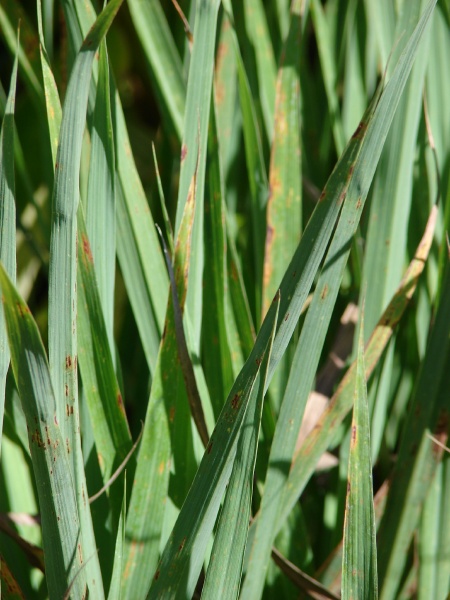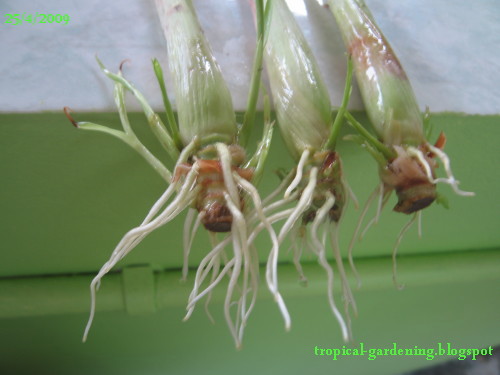
Adaptation
Finding tropical grasslands as the primary
home, Cymbopogon citratus has developed adaptations to
thrive in this environment. To regulate water as well as
gas exchange plants have developed special cells (guard cells)
on the leaves that open and close stomata. Lemongrass has
developed large stomata on both sides of the leaves; however, in
order to adapt to the environment, the number on the underside
of the leaf is significantly lower. Because of the heat, having
numerous stomata on the upper surface is necessary for cooling
the plants through transpiration. It is also practical for the
leaves to have the stomata on the upward facing leaf so that, when
opened, water is transpired, ion concentration is lowered, and
water and nutrients are pulled up from the xylem to supply the
plant with the nutrition that it cannot gain from the dry
environment.

Cymbopogon citratus has also adapted to the environment through positive and negative tropisms, meaning the respond to an external stimulus by growing in a positive or negative direction. The root system grows with positive gravitropism, towards gravity, underground to receive water and nutrients from the soil. The stem and leaves grow with negative gravitropism, against gravity, and with positive phototropism. Both tropisms aide in the plant growing towards light so it make begin photosynthesis. for more information on benefits of the leaves see NUTRICIAN
Furthering the adaptation in this plant is the
root system. Roots are necessary for the important tasks of both
storage, nutrient intake, anchoring, and transport. Cymbopogon
citratus has a fibrous root, or a root in which the radicle has died
back and fibrous roots extend from the stem into the soil at
maturity. This root helps aide in erosion control and will ensure
the plant is not uprooted by a passing animal by anchoring the plant
in place. Lemongrass roots are also particularly helpful in
anchorage in Indochina grasslands, which may flood annually. This
adaptation has enabled them to grow in long standing water. Growing in a tropical
grassland, lemongrass roots must be wide spread to ensure it will
have access to nu trients
and water, as well as be able to store them. The widespread roots
assist in surviving competition. See habitat
for more detail on this fact.
trients
and water, as well as be able to store them. The widespread roots
assist in surviving competition. See habitat
for more detail on this fact.
Lemongrass has also adapted a defense against "Root-knot" nematodes that would harm the plant. Cymbopogon citratus tested positive for having naturally occurring oils including Geranial, and neral (both with nematicidal activity) in the essential oils extracted from the foliage. This enables the plant to fight off nematodes.
Also in defense, is the citrusy scented oil that we also take advantage of because of its ability to ward off insects. Warding them off keeps away insects that are both directly (may feed on the plant) and indirectly (may attract insects who damage the plant) harmful to them.
.